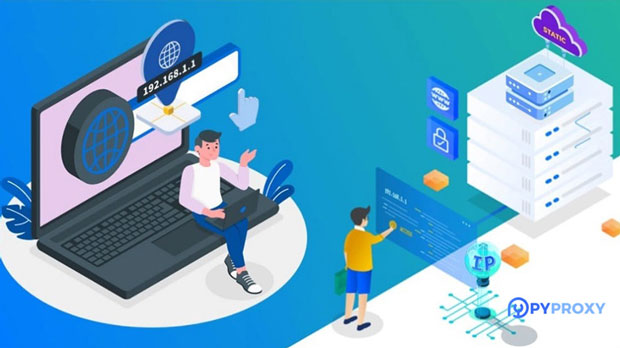In today's digital age, access to information is essential, but many websites are often blocked or restricted due to various reasons such as regional limitations, censorship, or network restrictions. When faced with these restrictions on mobile devices, a solution like Web Unblocker becomes invaluable. Web Unblocker is a tool designed to help users bypass such limitations, enabling them to access blocked web pages seamlessly. By utilizing Web Unblocker on a mobile device, users can easily enjoy unrestricted internet access regardless of location or restrictions imposed by their network provider. This article will delve into how Web Unblocker can be effectively used on mobile devices to unlock blocked websites, offering practical advice and step-by-step instructions. Understanding Web UnblockerBefore diving into the technicalities of using a Web Unblocker, it's crucial to understand what it is and how it works. A Web Unblocker is a tool or service that helps bypass internet restrictions such as firewalls, geo-blocking, or government censorship. Typically, Web Unblockers operate by routing your internet connection through a server located in a different region, effectively masking your actual location. This allows users to access websites that are normally unavailable in their region or network.For mobile users, a Web Unblocker provides a convenient solution to unblock websites on smartphones or tablets. Whether you're trying to access a streaming service, social media, or a news site, Web Unblockers can help users bypass any restrictions. There are various Web Unblocker apps and tools available, each offering a different set of features and benefits.Steps to Use a Web Unblocker on Mobile Devices1. Choose the Right Web UnblockerThe first step in unblocking websites on a mobile device is to choose the right Web Unblocker. There are many different tools available, including VPN services, proxy servers, and specialized Web Unblocker apps. VPNs are generally the most secure and effective method for bypassing restrictions, but they may require a subscription or setup process. Alternatively, Web Unblocker apps are easier to use and may be available for free, but they might not offer the same level of security and privacy as a VPN.When choosing a Web Unblocker, consider factors such as security, ease of use, speed, and any associated costs. If privacy and security are a priority, a reputable VPN service might be the best choice. If you're looking for a simple and free solution, a Web Unblocker app might be more suitable.2. Install the Web Unblocker App or Set Up the VPNOnce you’ve chosen the appropriate Web Unblocker, the next step is installation. For a Web Unblocker app, you can simply download it from the app store or other trusted sources and install it on your mobile device. Most Web Unblocker apps have a user-friendly interface, making the setup process quick and straightforward. Once installed, open the app and follow the prompts to start the connection.For a VPN service, you may need to sign up for an account and download the VPN app from the official store. After installing the app, you will need to log in, select a server location (preferably one in a region where the content you wish to access is not blocked), and connect to the server. Once connected, your internet connection will be routed through the VPN, bypassing any restrictions.3. Connect to a ServerFor both Web Unblocker apps and VPN services, the next crucial step is to connect to a server. The server location determines the region in which your internet traffic will appear to originate. For example, if you're trying to access a website that is only available in the United States, you can select a US-based server. By doing so, the website will think you are accessing it from the United States and grant you access.Some Web Unblocker apps automatically connect to the best server for you, while others allow you to choose your preferred location manually. If you're using a VPN, you will need to select the server you wish to connect to based on your needs. After selecting the server, simply hit the "Connect" button, and you will be able to access the blocked content.4. Access the Unblocked WebsiteOnce the connection is established, you can open your mobile browser and visit the website that was previously blocked. The Web Unblocker or VPN will route your traffic through the selected server, making it appear as if you are accessing the site from a different location. This will allow you to access the blocked site without any issues.It’s important to note that while Web Unblockers can bypass many types of restrictions, some websites might still implement additional measures to block such tools. In these cases, you may need to try connecting to a different server or using a different tool altogether.5. Troubleshooting Common IssuesWhile using Web Unblockers on mobile devices is generally straightforward, users may occasionally encounter issues. Here are some common problems and solutions:- Connection Failures: If you’re unable to connect to the server, try selecting a different server location or check your internet connection. Some free Web Unblockers might have limited servers, which could cause slower connections or connection failures.- Slow Speeds: If the website is loading slowly, try switching to a server closer to your geographical location. VPNs and Web Unblockers can sometimes reduce connection speeds, especially if the server is located far from your physical location.- Inconsistent Access: Some websites may still detect and block Web Unblockers or VPN connections. In such cases, try using a different Web Unblocker tool or server.Advantages of Using Web Unblocker on Mobile DevicesThere are several benefits to using Web Unblocker tools on mobile devices, especially in today’s increasingly restricted internet environment.- Unrestricted Access to Content: One of the most significant advantages is the ability to access content that would otherwise be unavailable due to regional restrictions or censorship. Whether it’s streaming services, social media platforms, or news sites, Web Unblockers help users access blocked content with ease.- Improved Privacy and Security: Many Web Unblocker tools, especially VPNs, enhance privacy and security by encrypting your internet traffic and masking your IP address. This is especially useful when using public Wi-Fi networks, where your data might otherwise be vulnerable to hacking.- Bypass Geo-blocking: With Web Unblockers, users can bypass geo-blocking restrictions imposed by websites, allowing them to access content from different regions. This is particularly useful for accessing international streaming services, gaming platforms, or even local news websites while traveling abroad.Using a Web Unblocker on mobile devices is an effective way to bypass internet restrictions and access blocked websites. By selecting the right tool, setting it up correctly, and connecting to the appropriate server, users can unlock content and enjoy unrestricted access to the internet. Whether you choose a Web Unblocker app or a VPN service, the process is simple and offers a valuable solution for users seeking more freedom online.
Apr 25, 2025
![arrow]()



















































